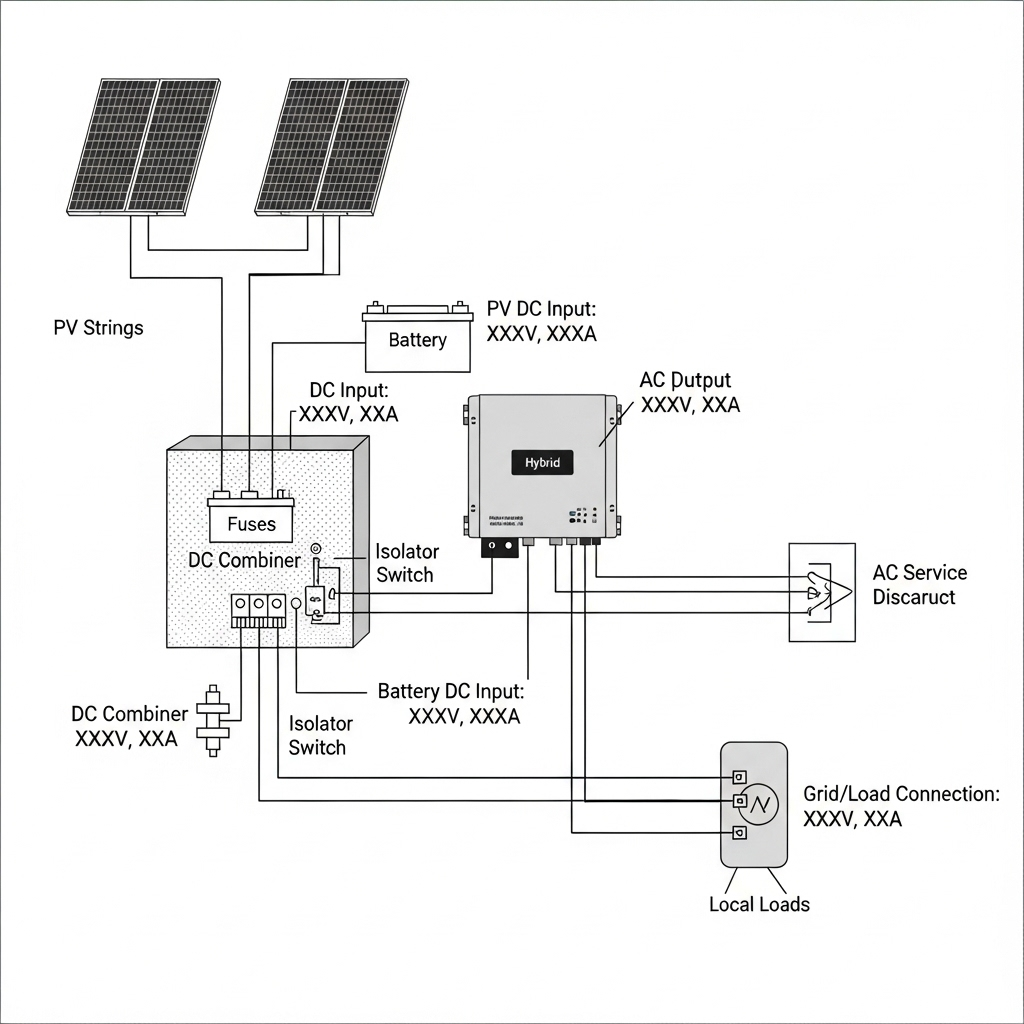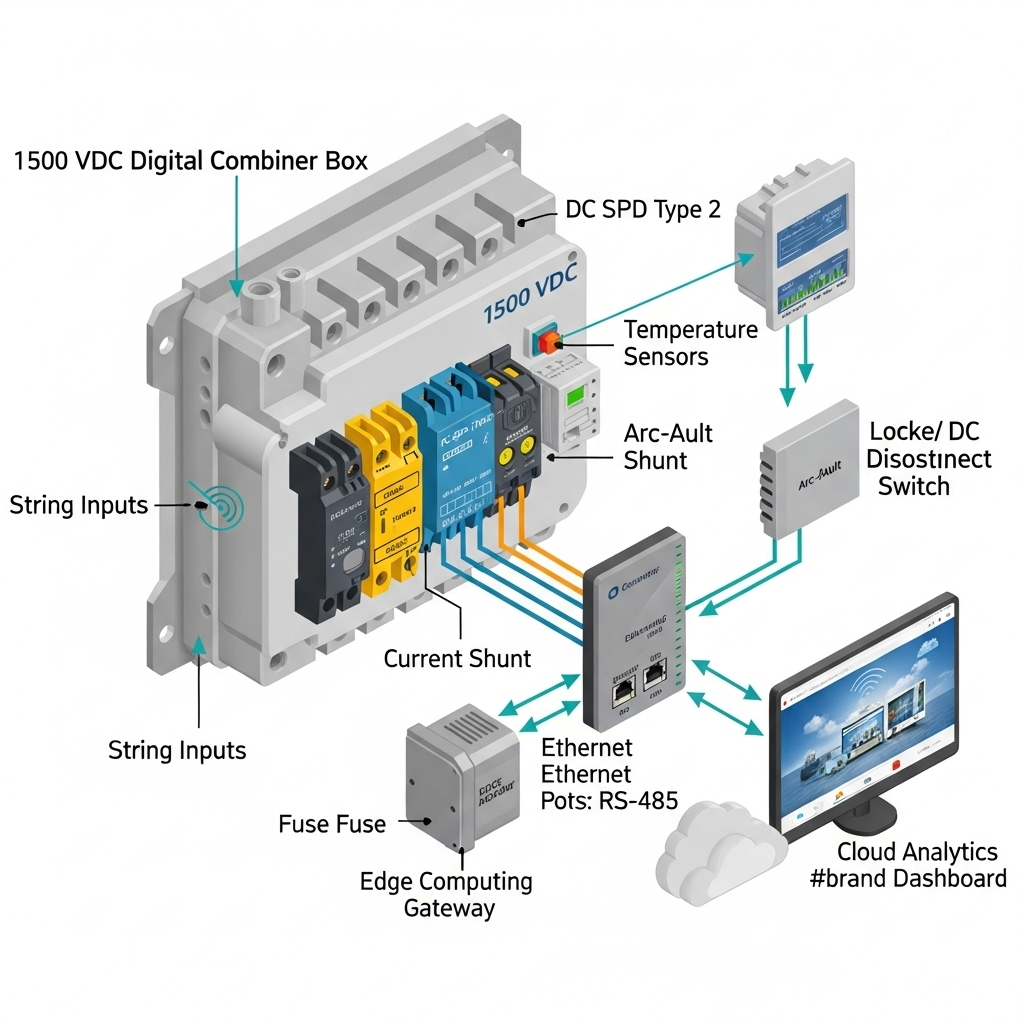Rooftop DC isolators have long been a point of debate in Solar PV safety regulations. Codes evolve, devices improve, and practices shift. This page gives a clear, practical answer for installers, designers, and facility owners working under IEC standards and NEC requirements.
The short answer
- Under NEC: A rooftop DC isolator next to the array is not a universal requirement. NEC 690 requires a PV DC disconnect in a readily accessible location and rapid shutdown for roof-mounted arrays. Both can be met with an inverter’s listed DC disconnect and compliant rapid shutdown devices. Rooftop switches remain optional and project-specific.
- Under IEC: Standards focus on safe isolation and maintenance. IEC 62548 and 60364-7-712 practices accept a DC disconnection device that is accessible and clearly identified. Many designs use an inverter-integrated DC switch or a combiner box disconnect. A dedicated rooftop isolator is not always required unless adopted by local codes.
Always confirm local enforcement. Authorities Having Jurisdiction (AHJs) can add clauses or interpretations that change device placement.
Standards landscape and why the answer changed
Modern PV equipment now integrates robust DC switching and remote shutdown features. This reduces the need to place an exposed switch on the roof. Industry summaries by IRENA list the core documents used by regulators and engineers, such as IEC 62548 for solar PV arrays and IEC 61730/61215 for module safety and performance. These references align with field practice where the primary target is safe isolation, clear labeling, and service access.
Grid-related conformance also links to inverter behavior. IRENA points to IEEE 1547 and IEEE-519 for power quality and harmonics limits in grid-tied systems. High-quality inverters with certified functions reduce risk and simplify protection design.
The US National Electrical Code continues to add clarity. Rapid shutdown in NEC 690.12 transformed array-level risk management. Energy storage expectations appear in NEC 706, while interconnection topics are covered in 705. These topics are summarized in IRENA’s quality infrastructure report, which also references UL 489H and UL 1741 SA used in certification chains. For a wider safety context and market backdrop, see the U.S. Department of Energy solar energy pages, the IEA, and the EIA.
NEC perspective: What you actually need on US rooftops
Rapid shutdown and array boundaries
NEC 690.12 requires quick reduction of voltage on or inside the array boundary. This is commonly met with module-level electronics or array-level devices listed for rapid shutdown. A separate rooftop DC isolator is not automatically required if the rapid shutdown solution complies and labeling is correct.
PV DC disconnect location
NEC 690 requires a DC disconnecting means in a readily accessible location. Many inverters ship with a listed, lockable DC switch. Placing a second switch on the roof can be redundant, unless the AHJ or project risk assessment calls for it.
Combiner box disconnects and servicing
Where strings combine on the roof, a combiner box with an integral disconnect improves service safety. This approach isolates multiple strings at once and aids troubleshooting. It also reduces arc exposure during maintenance.
IEC perspective: Safe isolation without forcing roof-mounted switches
IEC practices focus on isolation capability, identification, and accessibility. Under IEC 62548, designers provide means to safely isolate the PV array for maintenance and emergency response. An inverter DC switch or ground-level string combiner with a lockable disconnect can meet these aims. National adoption may add rules. Always review local code text and installation manuals.
According to IRENA’s grid codes overview, IEC 62548 and related standards guide array construction, cable routing, labeling, and protective devices. The emphasis is function: ensure that responders and technicians can quickly place the DC side in a safe state.
Comparing current practice under IEC vs NEC
| Topic | NEC requirements | IEC standards practice | Field note |
|---|---|---|---|
| Rooftop DC isolator next to modules | Not inherently required if rapid shutdown and accessible DC disconnect are provided | Not inherently required; isolation can be at inverter or combiner | Often omitted to reduce roof penetrations and failure points |
| Rapid shutdown | Explicit in NEC 690.12 for roof-mounted arrays | No identical clause; local rules vary, but hazard reduction is expected | Module-level or array-level shutdown improves responder safety |
| PV DC disconnect | Required, readily accessible; often inside or adjacent to inverter | Required isolation function; location selected for safe access | Lockable, labeled, and listed switchgear recommended |
| Combiner box disconnects | Used where strings combine, aids service and isolation | Common practice to isolate strings collectively | Fused combiners add overcurrent protection |
| Certification links | UL listings, UL 1741 SA for inverters | IEC type tests for array and components | Listing/marking must match the system voltage and environment |
Why many teams avoid rooftop DC isolators
- Reliability: Extra roof penetrations and enclosures increase water ingress risk, especially in harsh climates.
- Service clarity: A single ground-level disconnect reduces confusion and speeds lockout/tagout steps.
- Device capability: Inverters include listed DC switches; rapid shutdown addresses array voltage hazards.
These trends align with safety infrastructure described in IRENA’s quality infrastructure work, which ties protection design to certified devices and clear labeling.
Design checklist for compliant PV DC isolation
- Confirm AHJ stance on NEC 690 and local amendments. Document decisions in design notes. (Regulatory note: Not legal advice.)
- Select an inverter with a listed, lockable DC switch rated for system voltage and environment.
- Plan rapid shutdown at module or array level with listed devices. Ensure wiring meets the boundary definition.
- Use a roof combiner with an integral disconnect only where it adds service safety or meets a specific local rule.
- Label per code near service equipment and disconnects. Keep placards weatherproof and durable.
- Coordinate with ESS rules under NEC 706 for shutdown and signage if storage is present.
Integrating storage: Isolation and performance go hand in hand
Storage design affects DC architecture and shutdown paths. According to this reference on solar and storage performance, practical battery selection weighs cycle life, depth of discharge, round-trip efficiency, and inverter DC limits. It notes typical LiFePO4 cycle life in the multi-thousand range at moderate DoD and round-trip efficiencies around the low-to-mid 90% bracket. These metrics guide inverter selection, DC voltage windows, and protective device ratings.
For teams building hybrid systems, we focus on safe, scalable solutions: LiFePO4 batteries, residential ESS that combine batteries with hybrid inverters and PV modules, off-grid packages for homes or farms, and reliable solar inverters that convert DC to AC. The goal is simple—deliver isolation, clear shutdown, and long-term performance without adding failure points.
Two practical scenarios
10 kW residential roof with string inverter
Design uses an inverter with an internal DC isolator at ground level, plus module-level rapid shutdown. No rooftop DC isolator is required by the AHJ. A roof combiner is avoided to reduce penetrations. Labels at service equipment direct responders to the main DC disconnect.
100 kW commercial rooftop with multiple subarrays
Each subarray feeds a roof combiner with a built-in disconnect. This enables sectional isolation during maintenance. Rapid shutdown device per subarray is integrated in the combiner. A main DC switch is mounted near the inverters. Rooftop isolators at the module row are not used, as they add little value and raise ingress risk.
Safety, labeling, and interoperability
Marking, shutdown sequences, and interconnect behavior must be consistent. IRENA’s grid code overview links standards like IEC 62548, IEEE 1547, and EMC limits (IEC 61000 series). These help ensure that protection devices and inverters behave predictably during faults. For US deployments, the rapid shutdown label and the PV system disconnect placard should be weatherproof and near service equipment. Where storage is present, include shutdown instructions that follow NEC 706 signage patterns as summarized in this IRENA brief.
Component selection tips
- Switchgear ratings: Match maximum DC voltage and fault current; look for listings that reference UL 489H or equivalent as collated in IRENA’s quality reports.
- Environmental protection: Enclosures on roofs need robust gaskets and UV-resistant plastics or coated metals.
- Arc mitigation: Inverter arc-fault features plus careful routing, ferrules, and proper torque reduce DC arcing risk.
- Maintenance: Favor designs that allow isolation and testing from ground level. Keep thermal imaging and IV curve testing in the O&M plan.
Key takeaways
- IEC standards and NEC rules require safe DC isolation, rapid shutdown (in US), and clear labeling. They do not universally force a rooftop DC isolator at the array.
- Use inverter-integrated DC switches and compliant rapid shutdown to simplify design and reduce roof risk.
- Add combiner box disconnects where they improve service and coordination, not as a reflex.
- Cross-check local amendments and maintain an AHJ-approved single-line diagram. This content is not legal or installation advice.
FAQ
Are rooftop DC isolators mandatory in the US?
No. NEC requires an accessible PV DC disconnect and rapid shutdown for roof-mounted arrays. Many systems comply without a dedicated rooftop isolator.
Does IEC require the DC isolator to sit on the roof?
No. IEC practices accept safe isolation using an inverter switch or a combiner box disconnect that is accessible and clearly labeled.
Do microinverters or DC optimizers change the need?
Yes. Module-level devices often meet rapid shutdown and limit high DC on long runs. A separate rooftop isolator typically adds little.
How do combiner box disconnects fit in?
They isolate groups of strings and aid service. For large arrays, they improve safety and reduce downtime during maintenance.
What about storage and hybrid systems?
Follow NEC 706 for storage and keep shutdown labels consistent. Select LiFePO4 and hybrid inverters with DC ratings that match array voltage and isolation plans, as highlighted in this performance reference.





Leave a comment
All comments are moderated before being published.
This site is protected by hCaptcha and the hCaptcha Privacy Policy and Terms of Service apply.